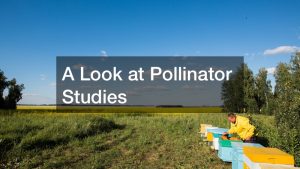
The main purpose of pollinator studies is to find solutions and strategies that will adequately support bees and improve crop pollination. Some of the main functions of pollinator research are to investigate the effects of pesticides on pollinator health, study bio-diversity, supporting pollination functions in various ecosystems, among others. We’re going to dive into the work that goes into pollinator study projects.
Pollination studies start in orchards and transfer to work in research labs. Researchers are tasked with finding ways to best support pollinators and ensure reliable and economical crop pollination. In the field, teams of researchers measure pollination yields in crops and work to manage rates and viability of pollination in these crops. Researchers also take care of counting, gathering, and assessing the types of bees that visit crop flowers.
Different species of bees pollinate differently, so bee identification is a key skill of workers in pollinator studies. There are over 3,600 species of wild bees in the United States and Canada, so ongoing research into their pollination patterns and interactions with their ecosystems is vital.
To learn more about pollination research and pollinator studies in general, check out the video we have linked above.
.





